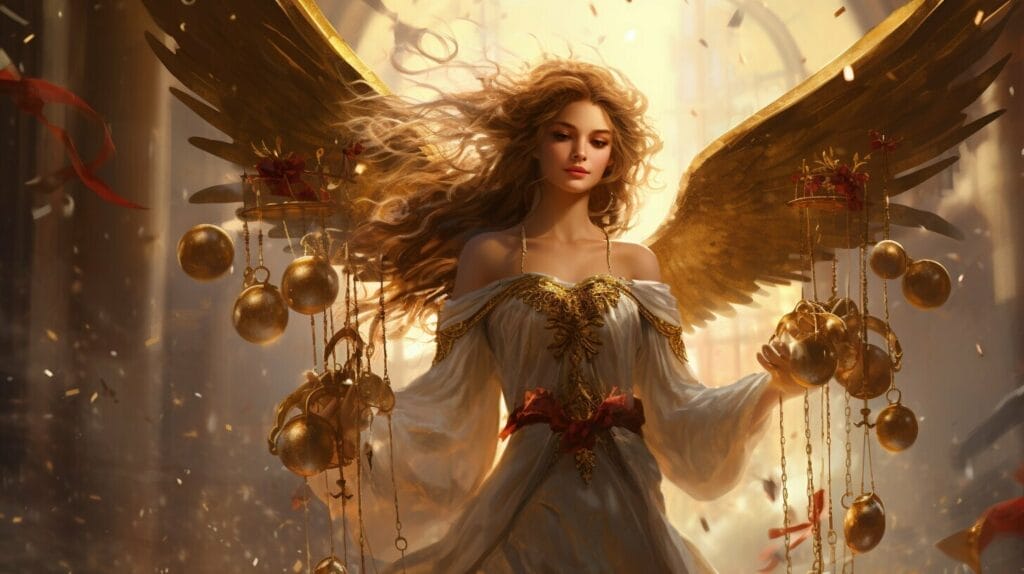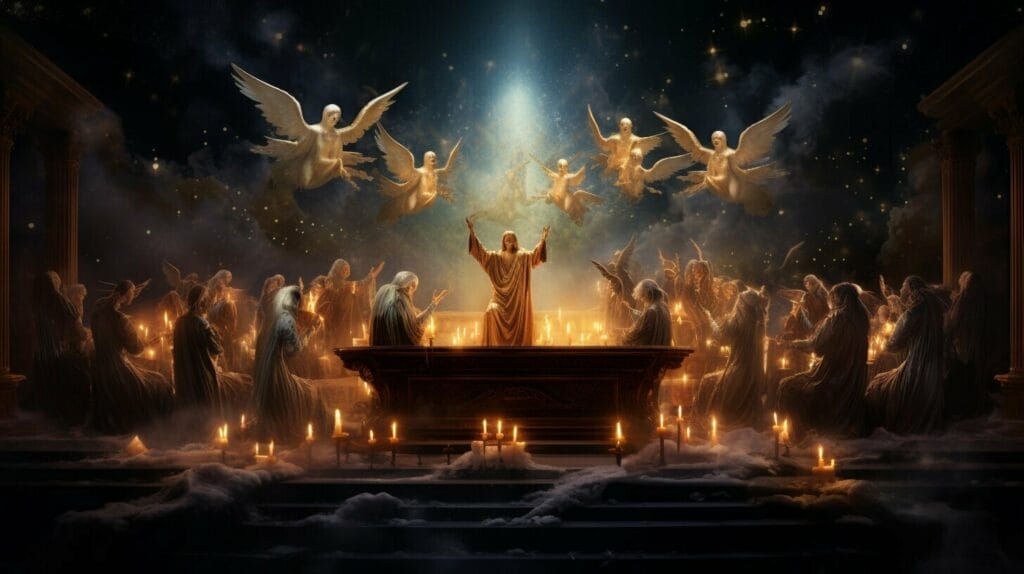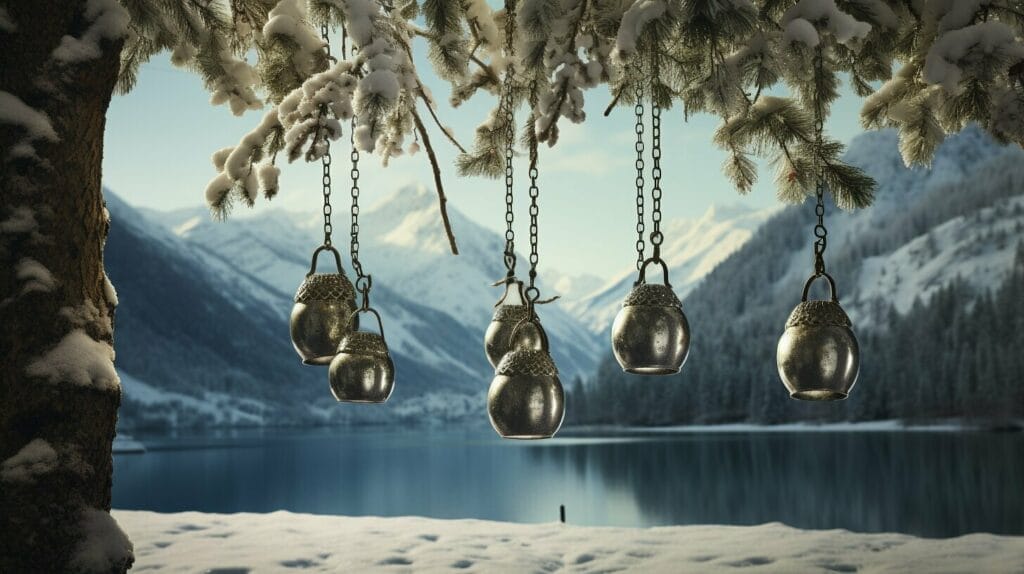How Did Christmas Bells and Angels Become Holiday Icons?
As the holiday season approaches, we begin to see familiar symbols of the season evoking feelings of warmth and nostalgia. Two such symbols are Christmas bells and angels, which have become iconic representatives of Christmas. But have you ever wondered how they became associated with the holiday? In this article, we will explore the fascinating history of Christmas bells and angels, and the significant role they have played in holiday traditions.

From medieval times to modern-day celebrations, Christmas bells and angels have captured our hearts and imaginations. Let’s dive in and discover the origins and evolution of these beloved icons.
Quick Summary
- Christmas bells and angels are significant symbols of the holiday season.
- The origins of Christmas bells can be traced back to the Middle Ages during winter festivals.
- Angels have played an integral part in Christian worship services, particularly during Midnight Masses.
- Christmas bells have become a symbol of joy and merriment, immortalized in popular holiday music.
- Angels are frequently incorporated into Christmas caroling and other festive performances.
The Medieval Origins of Christmas Bells
During the Middle Ages, the ringing of church bells held great significance during winter festivals. The sound of Christmas bells was believed to ward off evil spirits and bring blessings to the community. It was also a way to signal the start and end of religious services, as well as to announce the arrival of the holiday season.
The Medieval church bells were not like the small hand-held bells we see today, but rather large bells that were rung using a rope or a wooden lever. These bells were often decorated with intricate designs and inscriptions that held religious significance.
Over time, the tradition of ringing Christmas bells evolved, and it became customary to ring them on Christmas Eve and Christmas Day. This practice spread throughout Europe and eventually became a global tradition. The sound of Christmas bells became a symbol of hope, joy, and celebration, and it remains one of the most recognizable sounds of the holiday season today.

Today, the ringing of church bells is still an important part of Christmas celebrations, particularly in Europe. Many communities hold bell-ringing ceremonies on Christmas Eve, and some churches even allow visitors to ring the bells themselves. The tradition of Christmas bells continues to hold a special place in the hearts of people all around the world.
Angels in Christian Worship
Angels have always been an integral part of Christian worship, particularly during the Christmas season. In both Protestant and Catholic churches, angels hold symbolic significance and are often featured in ceremonies and Midnight Masses.
The presence of angels in religious services can be traced back to biblical times. In the Bible, angels appeared to Mary and Joseph, announcing the birth of Jesus and guiding them on their journey to Bethlehem. This event has become a significant part of the Christmas story and continues to be commemorated in Christian worship today.
During Midnight Masses, angels are often depicted in ornamentation, such as liturgical vestments and altar decorations. These decorations enhance the celebratory atmosphere of the service and help convey the message of hope and joy that Christmas brings. They are also represented in religious artwork, such as paintings and sculptures, which are displayed throughout the church.
Angels also hold a central role in Christmas carols and hymns. Songs such as “Hark! The Herald Angels Sing” and “Angels We Have Heard on High” capture the essence of the Christmas story and the importance of angels in Christian worship.
Overall, angels have become an essential part of the Christmas tradition, with their presence reflecting the spiritual significance of the holiday season.

Christmas bells have become synonymous with joy and merriment during the holiday season. From “Silver Bells” to “Jingle Bells” to “Carol of the Bells,” these beloved songs have immortalized the sound of ringing bells. They are also often used in popular holiday movies such as “Jingle Bell Rock” and “Sleigh Ride.”
The silver bell has become a symbol of the season, representing the festive atmosphere and the joy that comes with it. The sound of a bell ringing through the air, whether from a church tower or a sleigh, creates a magical moment that captures the essence of the season.
The “Carol of the Bells” is a well-known Christmas song that features the sound of bells throughout the song. The song is based on an ancient Ukrainian folk chant, which has been adapted into various versions over the years. The song’s lyrics speak of the joy and wonder of the holiday season and the hope that it brings.

The “Jingle Bell Rock” is another popular holiday song that features the sound of bells. It is a fun and upbeat song that captures the excitement and joy of the holiday season. The song has been covered by many artists over the years and has become a beloved classic.
“I Heard the Bells,” a poem by Henry Wadsworth Longfellow, also features the sound of bells, but in a somber and reflective tone. The poem speaks of the hope that Christmas brings, but also acknowledges the pain and suffering that exist in the world.
Throughout history, bells have held special significance, from the ringing of church bells to the bells on sleighs. They have become an integral part of our holiday traditions and continue to evoke feelings of joy and nostalgia.
As you celebrate the holiday season, take a moment to appreciate the symbolism of Christmas bells and the joy they bring. Listen to the sound of bells ringing in the air and allow yourself to be transported to a magical winter wonderland.
Angels in Christmas Caroling
When you imagine Christmas caroling, it’s hard not to picture a group of singers standing beneath a lamppost, bundled up in scarves and hats, and singing beloved holiday classics. But did you know that angels often play a prominent role in these festive performances?
Angels have been incorporated into traditional carols for centuries, with songs like “Hark! The Herald Angels Sing” and “Angels We Have Heard on High” featuring lyrics that celebrate the heavenly messengers of the holiday season. Beyond their presence in song, angels are often depicted in winter wonderland scenes, along with other iconic holiday symbols like Christmas trees, snowmen, and sleighs.
For school performances, children may dress up in angel costumes, complete with shimmering wings and celestial halos. These performances often take place in winter wonderland settings that transport audiences to whimsical and magical worlds.
From elaborate productions to impromptu street performances, Christmas caroling is a beloved holiday tradition that has stood the test of time. And with angels adding an extra touch of enchantment, it’s no wonder that caroling continues to be a cherished part of the holiday season.

The Enduring Legacy of Christmas Bells and Angels
As we celebrate the holiday season, Christmas Bells and Angels continue to captivate our senses and serve as timeless symbols of the season. Their enduring legacy is apparent in the countless carols, plays, and movies that feature them prominently. Indeed, they have become holiday icons that are both instantly recognizable and beloved.
Christmas Bells have become synonymous with the holiday season, and we often associate them with merriment and cheer. They may be found adorning homes, offices, and public spaces, and are often prominently featured in Christmas music and movies. The sound of jingling bells evokes feelings of joy and excitement, making them an essential part of our modern celebrations.
Similarly, Angels have been an integral part of Christmas since ancient times. Whether watching over the Christ child in nativity scenes or singing in Christmas carols, they continue to inspire and uplift us. Their presence during religious services and performances also adds a sense of ethereal beauty and wonder to the proceedings.
FAQ
How did Christmas Bells and Angels become holiday icons?
In this article, we will delve into the fascinating history of Christmas Bells and Angels and explore how they have become beloved symbols of the holiday season. Discover the origins of these iconic holiday icons and how they have played a significant role in Christmas traditions.
What are the medieval origins of Christmas bells?
During the Middle Ages, the ringing of church bells held great significance during winter festivals. These bells were believed to ward off evil spirits and bring blessings to the community. Learn how the tradition of Christmas bells began and how it evolved over time.
Why are angels important in Christian worship?
Angels have long been associated with the Christian celebration of Christmas. Discover how angels became an integral part of worship services, especially during Midnight Masses, and how both Protestant and Catholic churches embraced their presence in religious ceremonies.
What is the symbolism behind Christmas bells?
Christmas bells have become synonymous with joy and merriment during the holiday season. Explore the symbolism behind different types of bells and how they have been immortalized in popular songs like “Silver Bells,” “Carol of the Bells,” “Jingle Bells,” “Jingle Bell Rock,” “I Heard the Bells,” and more.
How are angels incorporated into Christmas caroling?
Angels often play a prominent role in Christmas caroling and other festive performances. Learn how angels are incorporated into traditional carols and how they contribute to the enchanting atmosphere of winter wonderlands and school performances.
What is the enduring legacy of Christmas bells and angels?
Christmas bells and angels continue to captivate our hearts and minds, maintaining their status as beloved holiday icons. Explore their enduring legacy and the significance they hold in our modern celebrations, particularly through cherished Christmas music and traditions.




